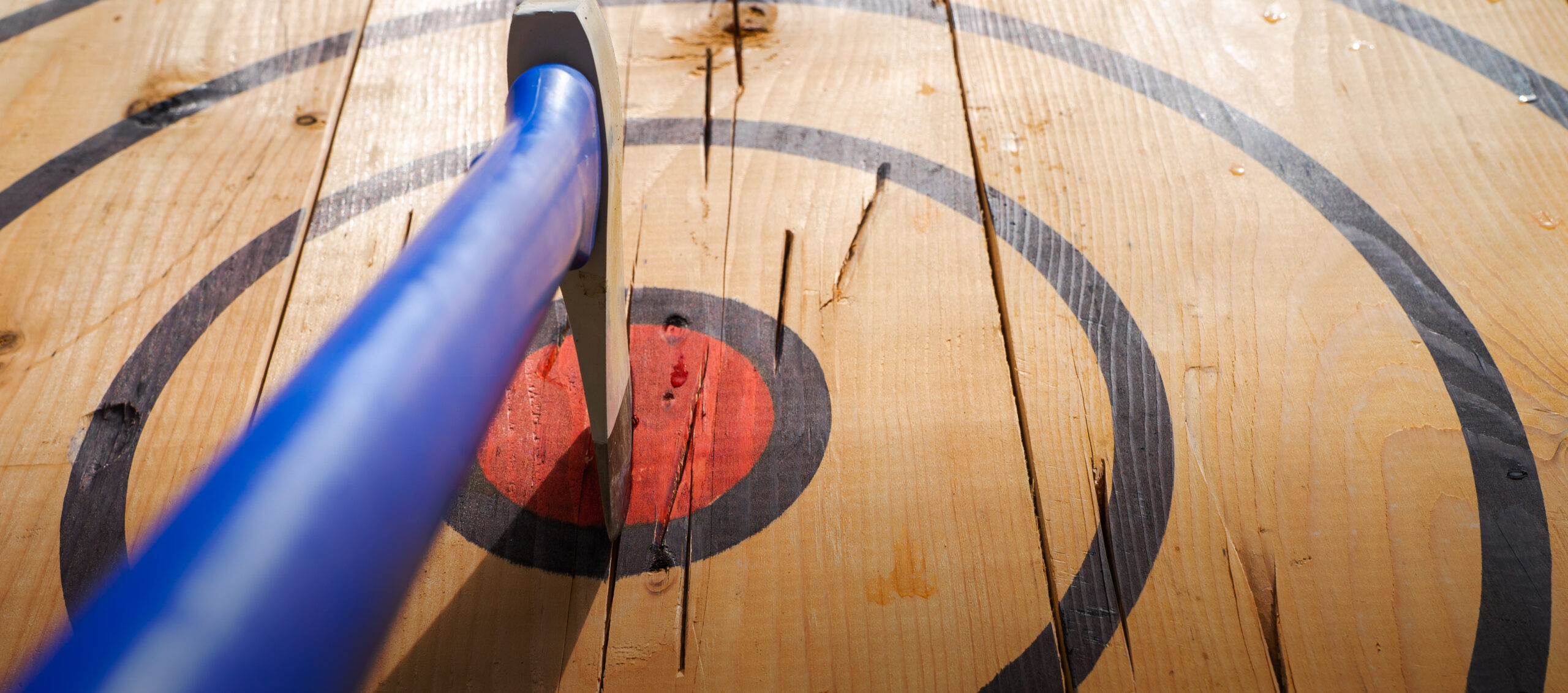Where to Discover the Most Interesting Axe Throwing Denver Experiences
The Fun of Axe Throwing: How This Sporting Activity Integrates Ability and Adrenaline for a Fun Time
Axe throwing has become a captivating sporting activity that masterfully intertwines the need for precise skill with the rush of adrenaline, offering individuals a special and interesting experience. The act of hurling an axe in the direction of a target demands concentration and method, at the same time fostering an atmosphere of camaraderie and pleasant competition. This intriguing mix of psychological focus and physical exertion has made axe throwing a prominent option for those looking for both entertainment and a sense of achievement. To absolutely value the deepness and charm of this activity, one have to consider its beginnings, the needed devices, and the foundational methods that make sure both safety and pleasure.
The Beginnings of Axe Throwing
Axe throwing, an entertainment task that has actually acquired considerable popularity in current years, traces its roots back to old times. The earliest documents of axe usage in affordable contexts are located among the Celts and Vikings, that tossed axes for sport as well as in fight training.
Middle ages European warriors, specifically during the Center Ages, exercised axe throwing as component of their martial training. The Francisca, a sort of tossing axe used by the Franks, became renowned for its lethal accuracy. This conventional tool was designed to be thrown at enemy guards and shield, showcasing its double utility in both sporting activity and battle.
In more current history, axe throwing saw a rebirth in the logging camps of The United States and copyright in the 19th and 20th centuries. Lumberjacks would certainly involve in pleasant competitors, testing their precision and strength by targeting at wood targets. This advancement from a survival ability to an entertainment activity has led the way for its contemporary renewal, with specialized places and organizations currently celebrating the sporting activity worldwide.
Devices You Need
Recognizing the abundant background of axe tossing boosts the admiration of the sport's modern version. For affordable and entertainment axe throwing, the most commonly utilized kind is the hatchet, commonly considering between 1.25 to 2 extra pounds with a deal with length of around 16 inches.
Equally important is the target. Regulation targets are built from wood, with softwood ranges like pine or cottonwood being favored for their ability to hold the axe and absorb. The target is typically divided into 5 concentric circles, each with a certain factor value, to facilitate rating.
Safety and security equipment, though usually forgotten, is important. Protective gloves can boost hold and stop blisters, while closed-toed footwear are a should to secure feet from dropped axes (axe throwing denver). A well-lit, spacious throwing area, full with safety and security obstacles, guarantees a regulated setting where participants can concentrate on sharpening their abilities.
Basic Techniques Described
Mastering the fundamental methods of axe throwing is necessary for both safety and security and proficiency. The very first strategy to comprehend is the grasp. Hold the axe with a firm, yet relaxed hold, comparable to holding a golf club. The dominant hand should be positioned straight below the axe head, while the non-dominant hand sustains completion of the deal with.
Your leading foot should be a little ahead, lining up with your target. This positioning aids in keeping stability and directing power properly towards the target.

Security First
Making certain safety in axe throwing is vital to creating an injury-free and delightful experience. A well-designed axe throwing center attributes clear separations between throwing lanes, durable backgrounds to capture roaming axes, and non-slip flooring to avoid mishaps.
Advantages of Axe Throwing
Axe tossing offers a myriad of advantages that prolong past easy recreation. The repetitive activity of throwing the axe also boosts hand-eye control and great motor skills.
Emotionally, axe tossing calls for precision, technique, and emphasis, making it an excellent method to hone cognitive skills. The concentration required to strike the target can work as a type of mindfulness, allowing participants to clear their minds and minimize stress and anxiety. This psychological engagement can be specifically beneficial in helping people create better analytical skills and psychological strength.
Socially, axe throwing is typically enjoyed in group setups, fostering team-building and sociability. Whether as component of a business occasion or a laid-back trip with good friends, the sport motivates interaction and partnership. Additionally, the communal experience of discovering and enhancing with each other can strengthen relationships and develop enduring memories.
Verdict

The earliest records of axe use in affordable contexts are located among the Celts and Vikings, that tossed axes for sport as well as in battle training. Release the axe when your published here hands are roughly at eye level, permitting the axe's all-natural turning to direct it towards the target.
A well-designed axe tossing center attributes clear separations in between throwing lanes, strong backdrops to catch stray axes, and non-slip floor covering to avoid crashes. Individuals have to be advised on the appropriate means to toss the axe and manage, emphasizing regulated, calculated activities over powerful tosses.
In recap, axe throwing stands out as a sport that masterfully incorporates ability, precision, and adrenaline.